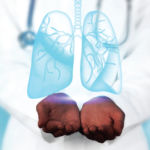Average Healthcare Costs
The average yearly all-cause healthcare costs ranged from $40,941 (SD $55,682) to $51,849 (SD $77,125). The median all-cause healthcare costs ranged from $28,021 (interquartile range [IQR] $13,314–49,879) to $31,914 (IQR $13,563–56,180).
The main drivers of cost were inpatient admissions, other outpatient services and outpatient pharmacy. Each year, between 13.6% and 19.5% of patients were hospitalized with respiratory-related diagnoses. In addition, 13.7% to 19.4% were seen in the emergency department for respiratory complaints. Average yearly respiratory-
related costs ranged from $8,944 (SD $21,021) to $14,008 (SD $65,346). These alone accounted for 18.5–29.4% of total all-cause costs.
Limitations Noted
The authors note limitations to consider. Using the claims-based MarketScan Research Database, they relied on claims data for clinical details based on ICD-9-CM coding rather than clinical information from medical records. Misclassifications may have occurred. Their use of multiple diagnoses may have excluded some true cases of RA-ILD leading to underestimates of prevalence. The date of diagnosis wasn’t available, meaning some previously diagnosed cases may have been classified as incident cases.
“Our results highlight that ILD is a very important manifestation of RA,” says Dr. Fischer. “It impacts morbidity, survival and has an economic impact on society. We believe these results highlight the need to assess for ILD in RA and point to a need to identify therapies to alter the natural history of RA-ILD.”
‘Surprisingly High Healthcare Costs’
Tracy Doyle, MD, MPH, is an assistant professor at the Harvard Medical School and a physician in Pulmonary and Critical Care Medicine at Brigham and Women’s Hospital in Boston. She says this is an important study for many reasons. “It was surprising how significant healthcare costs were,” she says. “It was something a lot of us who do research and treat these patients had expected, but actually seeing it validated in print was very helpful.”
She thinks these results will help increase interest in and research into better understanding those with RA-ILD to treat, prevent and hold down costs associated with the disease.
Moving in the Right Direction
“Another thing that I found very interesting was that although the prevalence has been increasing, the incidence has stayed stable,” she says. “This is telling me that we are already moving in the right direction. The prevalence is up probably because we are finding RA-ILD sooner and people are living longer with it—something the authors hypothesized as well.”
She also noted the mortality was consistent with other studies showing around one of three patients dying within five years of diagnosis. This was not a surprising outcome and validated that although treatment has come a long way, we still need better options.
“I think this is a very impressive study,” says Dr. Doyle. “It has some very good information for those involved in healthcare finance, and from a clinical standpoint, this validates there are many people with RA-ILD and they have a lot of healthcare needs. We need to figure out how to find RA-ILD earlier so we can prevent and treat it better. Hopefully, this will help justify requests for research money to do just that.”

